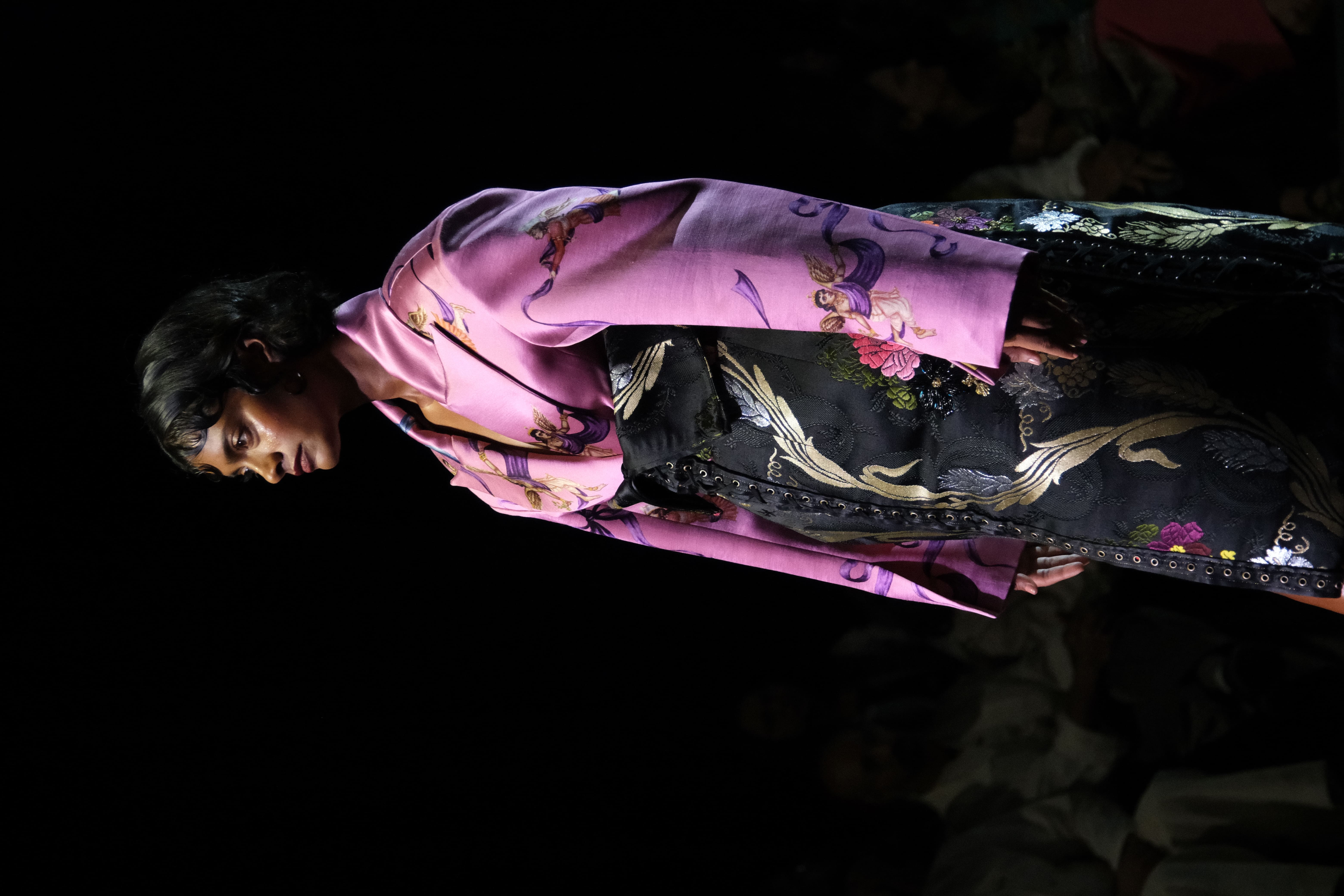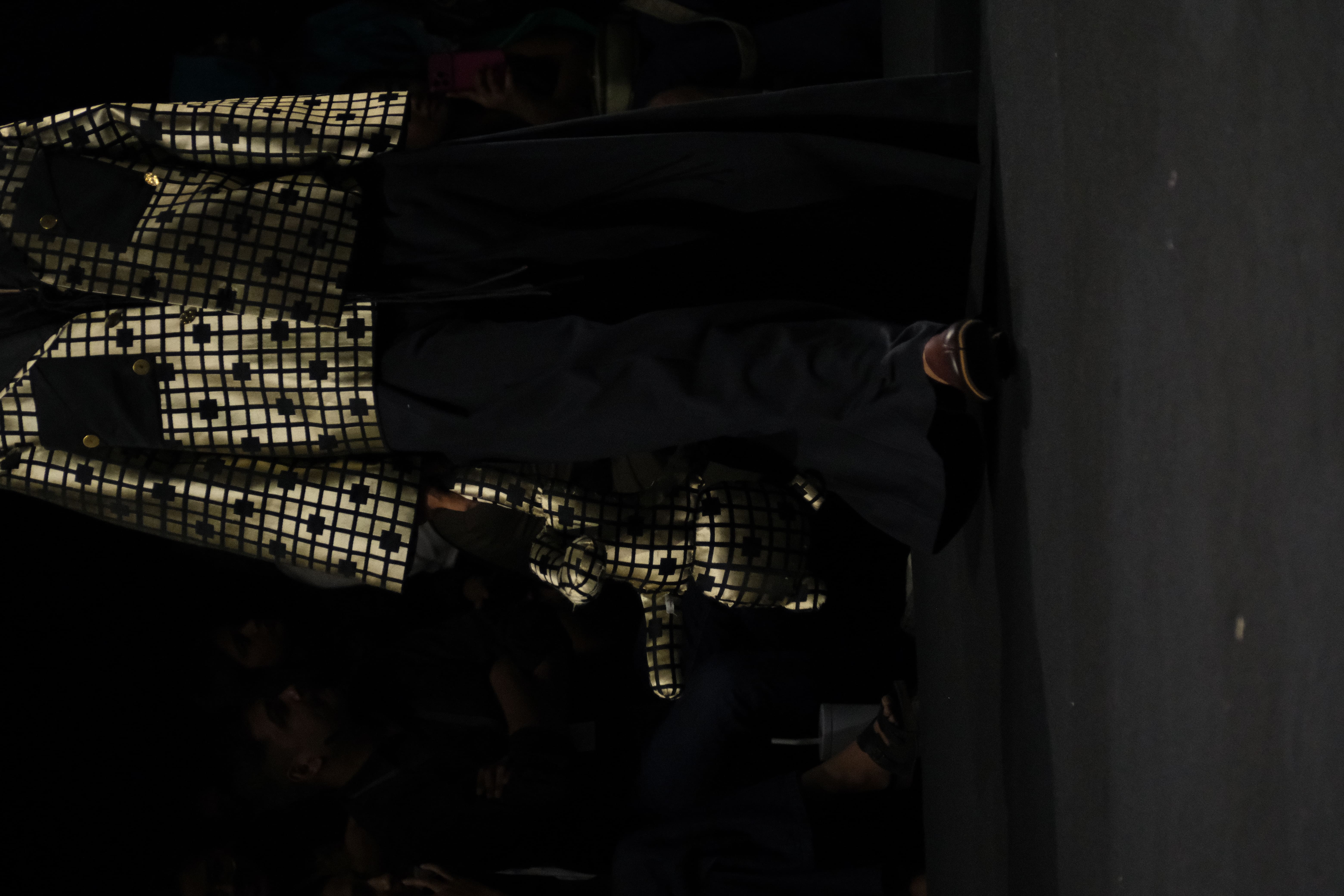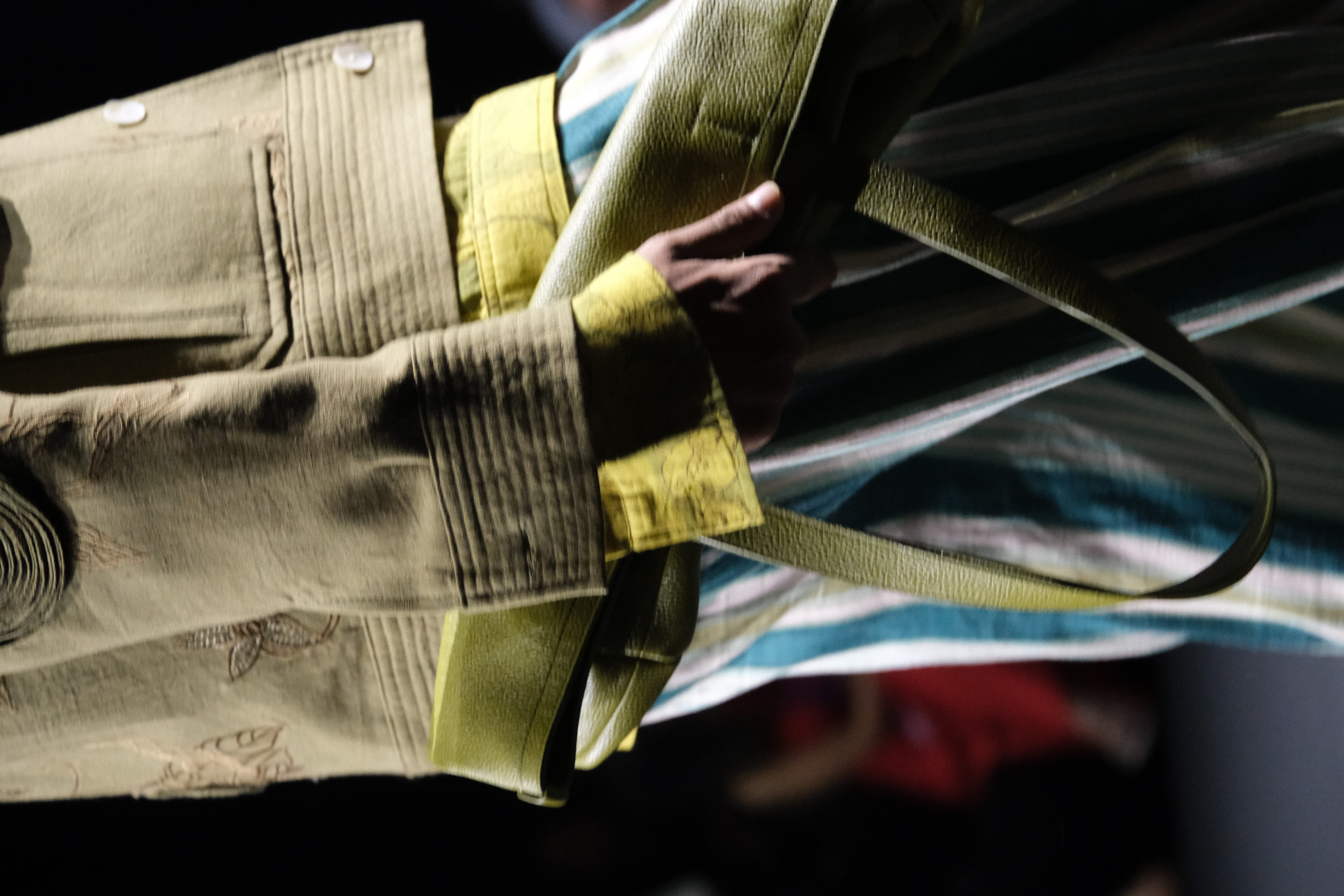share

At Lakmē Fashion Week 2025, three independent labels ditch the rulebook and stitch something stranger, softer, and smarter.
Every once in a while, a show reminds us that fashion’s true beating heart is not in its institutions but in its outliers. That’s what the NIF Global GenNext showcase at Lakmē Fashion Week 2025 offered—a glimpse into a future not dictated by commercial polish or the weight of legacy.
The designers—Abhichiq, That Antiquepiece, and Quarter—may still be emerging names, but their inclusion in the GenNext lineup reflects a shift in attention toward India’s burgeoning independent fashion scene. Working out of small ateliers and resisting the sleek hegemony of corporatised couture, they represent the anti-establishment energy the fashion industry needs And the front row was paying attention. Perhaps that’s why Manish Malhotra, Anaita Shroff Adajania, and Ekta Rajani took their place in the front row for this show on Day 2. Their presence wasn’t incidental; it signalled a growing recognition that the future of Indian fashion might well lie in its independents.
As the show began, what unfolded was a triptych of expressions—sharp, bold, emotional—from a generation of designers speaking directly to a consumer that’s willing to shop India, not just for value, but for cultural meaning. These were not just debut collections. They were manifestos.
Yash Patil from That AntiquePiece did not play it safe. The collection leaned into corsetry, cuts reminiscent of upper-crust Victorian balls, and floral details tucked into loose braids. But it stopped short of mere costume. This wasn’t role-play—it was tension: between India and the West, between structure and softness, embroidery and silhouette. It felt like a merging of Western technique, construction, and fit, but grounded in an illustration of the craft capabilities of our country.


Abhichiq took a different route. The collection titled Ciao blended resort with pret—putting men in easy linens in stripes and checks, kurtas embroidered and layered with jackets. It offered a picture of the modern Indian man: part dandy, part pragmatist, walking to the rhythms of swing and jazz. It asked: what if pret was remade using handspun fabrics? What if resortwear responded to the actual climate of Indian summers, rather than borrowed European ideas of leisure? The result had one foot in Indian textile tradition, the other firmly planted in now.
And then there Quarter, with a poignant question with the aim of ushering in a broader conversation. The show opened with a quiet provocation: “Are we allowed to talk about grief?” What followed was an almost cinematic treatment of that question—models walked with their faces covered with black dots, challenging superstitions. Blankets and teddies were not just symbols of comfort, but became garments themselves. The collection addressed traditional notions of beauty with conversation pieces: sharp tailoring was mixed with classic textiles, saris co-existed alongside shorts, metallic gold salwar kurta and deep red shorts.
Fashion is often said to be about the new. But what we saw here wasn’t just new. It was necessary.
This GenNext edition of designers refused to conform to what “arrival” is supposed to look like—their expressions were utterly rooted in India with the finest of Western tailoring under their belt.
Of course, the questions linger. How easy is it to be a small brand and stay afloat? What does it take to finance a show like this? These designers work from studios across cities, stitching dreams with limited budgets and boundless effort. For years now, stylists and designers have named the independents as the ones to watch. This time, the watching became a little more collective.



Alia Allana